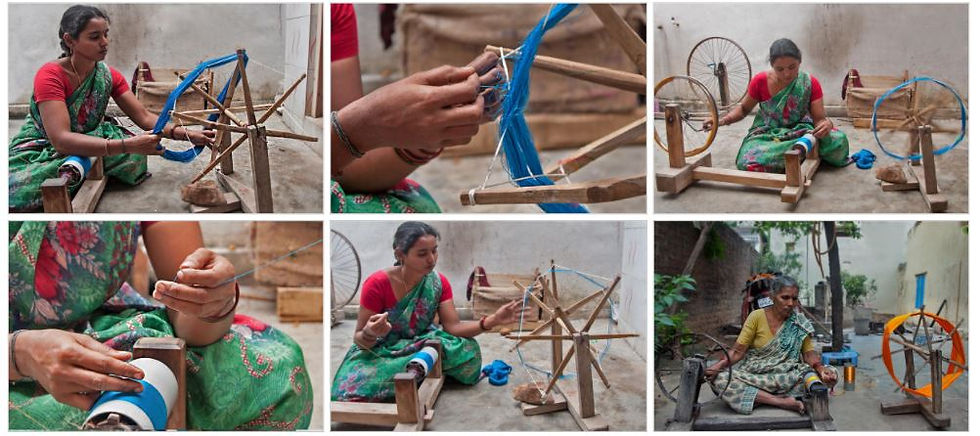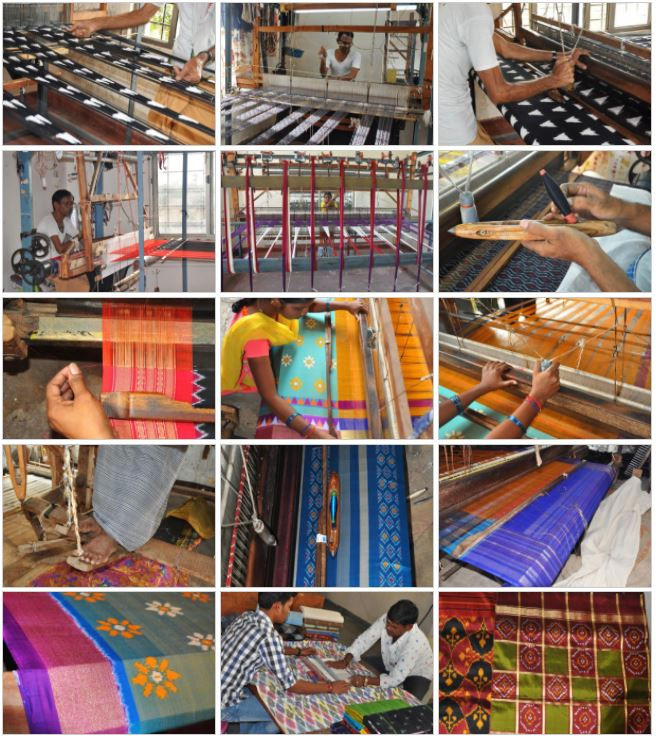9 Yard beauty: Weaving Grace thread by thread
- Sravani Naraparaju
- Jan 21, 2021
- 3 min read
Every childhood is basked under the warmth of innocence, curiosity, purity, adventure and life. Under the folds of their innocence belies the curiosity of being an adult to look like their mother, to mimic their father, to sit in a rocking chair and enjoy the evening like their grandfather or make cookies like a grandmother. This curiosity is woven into their young minds advently showing itself through their actions like trotting through the house in their father's shoes to walk along with him, wearing grandfather's spectacles to see the world through his eyes and becoming a mother by wrapping a saree around that little figure. These actions embed into a child's heart and become sweet memories as they enter adulthood becoming an escape window on a tired day . As we grow up these actions of being in an adults shoes, see the world through their eyes becomes a burden than a fantasy. However, the idea of losing oneself in the folds of the 9 yard saree grow up with us through time to become a hobby, pleasure, tradition and an expression.
That 9 inch beauty is not only a child's dream but a weavers art piece. Every single thread is dyed, pulled through the weaves and arranged in patterns just like a piece of art to create the greatest creation of some little girls dream. Today, I want to present the story of handlooms of Telangana and Andhra Pradesh as an ode to the art and the artist.
The magic of these sarees are hand woven on looms over a period of time bringing together thread by thread, motif by motif. The magic tool of this art is the loom and the process of weaving.
The weaving process consists of various steps including obtaining the silk through the cocoon, removing the natural gum, dying the threads and finally weaving the saree.
It is interesting to note that there are a few different styles how handloom sarees are weaved. Here, be prepared to take a virtual tour about two of the widely used styles of weaving. The basic principle of weaving is similar, however the process differs as the design style changes. For instance, for sarees with Iqat prints have a different process than a Venkatgiri style of sarees.
Weaving Process: The raw materials such as cotton are brought from Coimbatore, silk from Bangalore, zari from Surat and segregated as per the end use to be obtained. In case of weft the yarns are winded to the plastic pirns and spools, especially for the Jamdani design insertion. Zari thread segregated as per in warp way and spools.
The warp yarns are spread as per the pattern of design in the open space outside the house, special care is taken to insert each yarn with colour. The adai system is carried out for the laying of the Jamdani design, for the insertion of the weave the adai arrangement is spread and the yarn is weaved along with extra yarn insertion with spools as per the colour to be inserted like the peacock, mango design etc. In some cases after the fabric is woven rice starch is applied for strength purposes and rolled on to the beam.
Ikkats are normally of two types –single ikat, where only the warp is tie-dyed and interwoven with the weft, which is either uncoloured or has only one basic colour; and double ikats where both, warp and weft are tie-dyed and positioned in such a way that they work together to create the specific design with that signature bleed.



Styles of Sarees -







Looking at these beautiful pieces of art definitely would have brought a smile on your face. However, unfortunately it is a dying art which is slipping off into darkness consumed by mass produced cloth, lack of skill transfer, very less incentives and poor profits. The process of weaving the saree takes a lot of effort, sometimes upto 2-3 months and takes a lot of manual effort. This woven magic of threads goes into the market losing its whiff among other manufactures and gain very less returns which is often not filling the pockets of the weavers.
At a time like this, it is our responsibility "To protect the innocence of the little girl wrapped under the folds of a saree by keeping alive the art of handloom weaving. By protecting the artist, Let's protect the Art "
So the next time we go shopping let's pick up one bag of handloom sarees, visit state sponsored khadi craft stores, wrap our little girls in these sarees while talking about the tales of 'Our own 9 yard beauty'.



Comments